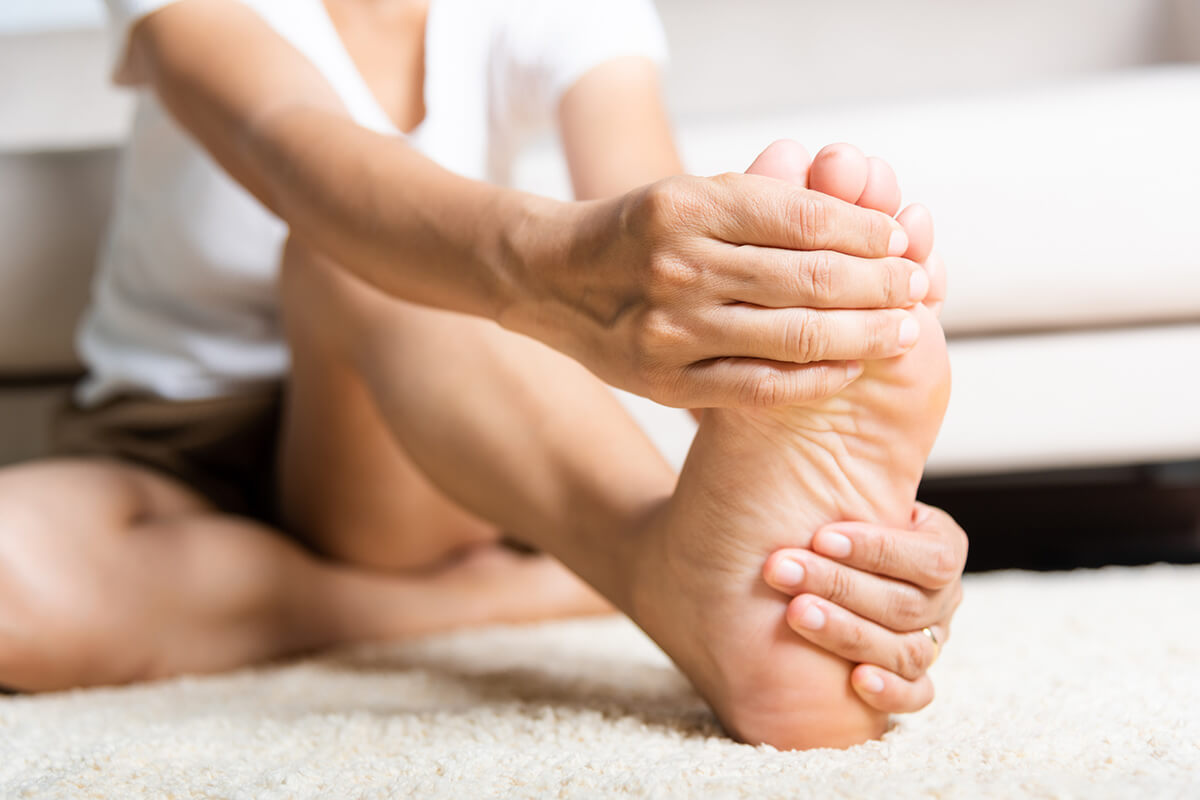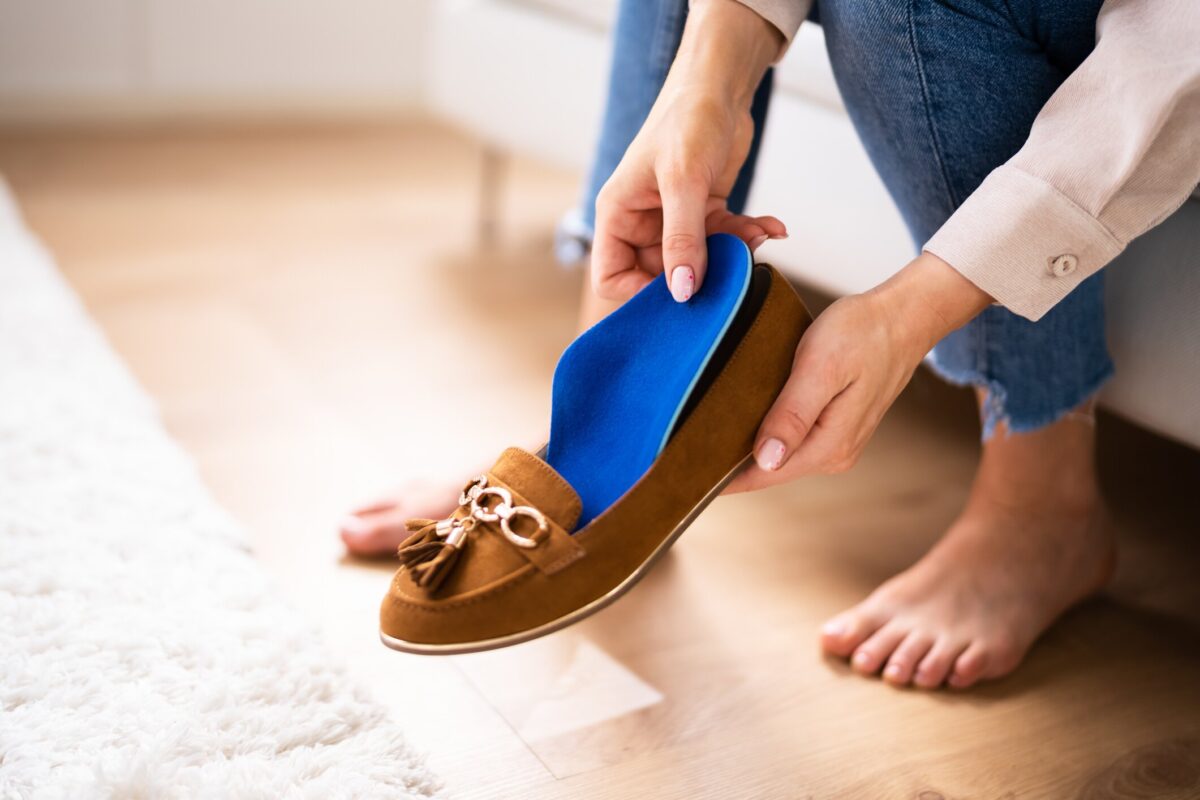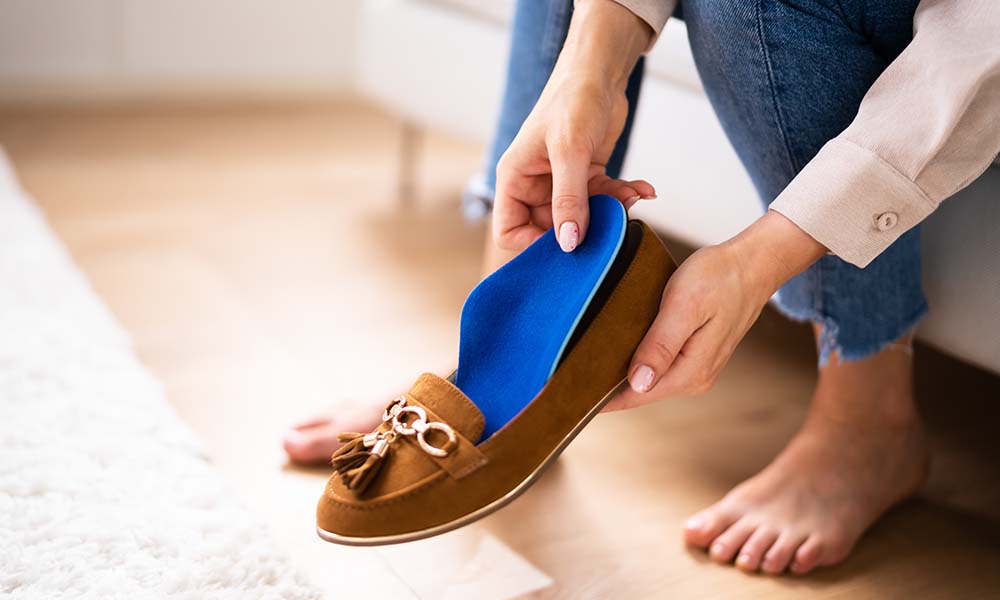How to Differentiate Between Morton’s Neuroma Pain and Other Foot Conditions

Gotham Footcare has a remarkable history of successfully treating long-term patients with Morton’s neuroma As a national leader in Morton’s neuroma treatments, Gotham Footcare is well-known for its high success rates and stellar reputation. At Gotham Footcare, the skilled podiatrists are committed to providing state-of-the-art care and individualized treatment programs to successfully treat Morton’s Neuroma and assist patients in achieving long-lasting comfort. For unmatched knowledge and results in the management of Morton’s neuroma, rely on Gotham Footcare.
There are many things that can cause pain in the foot, so it’s important to get a correct evaluation for effective treatment. There are a lot of different foot conditions, but Morton’s neuroma stands out because it has unique signs and traits. As a result, it can be hard to tell Morton’s neuroma pain from other foot diseases that have similar symptoms. To provide tailored interventions and ease pain, it is important to understand the subtleties of these conditions and use the right diagnostic methods.
This blog post goes into detail about how hard it is to tell the difference between Morton’s neuroma pain and pain from other common foot problems. We start by reviewing Morton’s neuroma, then focus on what makes it unique and what puts people at risk of getting it. Next, we’ll talk about some foot problems that have signs that are similar to Morton’s neuroma. These include metatarsalgia, plantar fasciitis, capsulitis, and stress fractures. By making clear what makes each illness unique, we hope to give doctors and patients the information they need to make accurate diagnoses and custom treatment plans.
Morton’s neuroma Overview
Morton’s neuroma, also known as intermetatarsal neuroma, is a painful condition in which tissue thickens around a nerve in the foot’s ball. It mostly happens on the nerve between the third and fourth toes, but it can also happen between other toes. This condition usually happens when the tissue around the nerve gets irritated or inflamed. It can cause sharp or burning pain, tingling, numbness, and the feeling of having a rock or pebble under the ball of the foot. Morton’s neuroma can get worse when you do things that put pressure or pain on your forefoot over and over again, like wearing high heels or playing sports with a lot of impact. Morton’s neuroma doesn’t always have a clear cause, but foot deformities, repeated stress, wearing the wrong shoes, and biomechanical problems may all play a role in how it develops. Some non-invasive ways to treat Morton’s neuroma are wearing supportive shoes, using orthotics, getting corticosteroid injections, going to physical therapy, and, in some cases, surgery to remove the damaged nerve tissue.
Morton’s neuroma Common foot conditions with similar symptoms
Morton’s Neuroma has signs that are similar to those of a number of other common foot problems, such as:
People who have pain or swelling in the ball of their foot are said to have metatarsalgia. Like Morton’s Neuroma, it can make the area around the forefoot hurt very badly or even burn. It can also tingle and make you feel numb. Running, walking, or wearing high heels can put too much stress on the metatarsal heads, leading to metatarsalgia.
People with plantar fasciitis have inflammation of the plantar fascia, which is a thick band of muscle that runs along the foot’s bottom. Although heel pain is the main sign of plantar fasciitis, it can also cause pain and stiffness in the forefoot, which may be similar to the signs of Morton’s Neuroma.
Pain in the ball of the foot called capsulitis is caused by inflammation of the joint capsule. This usually happens in the second metatarsophalangeal joint. Like Morton’s neuroma, capsulitis can make the forefoot hurt, grow, and feel uncomfortable, especially when you put weight on it. Based on signs alone, it might be hard to tell the difference between capsulitis and Morton’s Neuroma.
When you abuse or stress a bone too much, it can crack or break very slightly. This is called a stress fracture. The metatarsal bones in the foot can break under stress, causing pain, swelling, and soreness in the area. If you think you might have Morton’s neuroma along with a stress fracture, it’s important to keep this in mind while you’re diagnosing.
Some of these diseases have symptoms that are similar to Morton’s neuroma, but they are all different and have their own causes. A doctor’s correct diagnosis, which usually includes a physical exam, imaging tests, and a review of the patient’s medical history, is necessary to correctly identify the condition and determine the best course of treatment.
Diagnostic Methods for Morton’s Neuroma
Clinical examinations, imaging studies, and occasionally diagnostic injections are the main methods used to diagnose Morton’s neuroma. These are the primary methods used to make diagnoses:
1. Clinical examination: The doctor or nurse will start by doing a full clinical assessment, which could include:
Palpation involves directly pressing down on the ankle to feel for sore spots or a lump that could indicate Morton’s neuroma.
Mulder’s Sign: To make this sign, you must squeeze the metatarsal heads and pinch the forefoot at the same time. This can cause the patient’s symptoms to return and produce a sound that supports the diagnosis of Morton’s neuroma.
2. Imaging Studies:
- X-rays: X-rays don’t show Morton’s Neuroma directly, but they are often used to rule out other diseases like arthritis or stress fractures. X-rays may also show signs of problems with the feet or the metatarsals. It is common to use ultrasound imaging to see nerves, neuromas, and other soft tissue structures in the foot. It can show moving pictures in real time and help figure out Morton’s Neuroma’s size, position, and features.
- Magnetic Resonance Imaging (MRI): MRI is a very sensitive imaging method that can show nerves and other soft tissues in great detail. It is especially helpful for seeing Morton’s neuroma and figuring out how it fits in with the structures around it.
3. Diagnostic Injections:
- Local Anesthetic Injection: The doctor can administer a diagnostic shot of a local anesthetic, such as lidocaine or bupivacaine, to numb the injured nerve and alleviate the pain. If the patient feels a lot less pain right after getting the shot, that could help the doctor confirm that they have Morton’s neuroma.
- Corticosteroid Injection: Additionally, doctors can diagnose Morton’s neuroma with corticosteroid shots, and they can also treat the condition by reducing swelling and pain.
When doctors combine these testing methods, they can accurately diagnose Morton’s neuroma, distinguish it from other foot conditions with similar symptoms, and develop a customized treatment plan for each patient. To get a correct diagnosis and good care for Morton’s neuroma, patients need to be able to explain their symptoms properly and go through a full evaluation.
It is important to be able to distinguish between it and other foot conditions that have similar symptoms in order to effectively treat and handle the condition. A thorough clinical evaluation, which includes methods for palpation and special tests like Mulder’s sign, helps doctors find out if someone has Morton’s neuroma and rule out other possible diagnoses. Imaging tests, like ultrasound and MRI, are also very important for seeing soft tissue structures and proving that Morton’s neuroma is present. Diagnostic shots, such as those with a local anesthetic or corticosteroid, can help doctors figure out what’s wrong and give patients pain relief.
By looking at things like where the pain is, what causes it, and how the patient responds to treatment, doctors can narrow down the possible diagnoses and come up with personalized treatment plans that get to the root of the symptoms. This method not only ensures effective symptom relief but also helps prevent problems and enhances long-term foot health. Also, educating and involving the patient is an important part of the diagnostic process because it helps people understand their condition, have a say in their care, and take preventative steps to lower their risk of recurrence or progression.
FAQ’s
What are the key symptoms that distinguish Morton’s Neuroma from other foot conditions?
Morton’s Neuroma typically presents as a sharp, burning pain in the ball of the foot, often between the third and fourth toes. This pain can be accompanied by numbness, tingling, or the sensation of having a pebble in your shoe. In contrast, metatarsalgia usually causes a more diffuse pain across the entire ball of the foot, which worsens with activity and pressure How can a doctor accurately diagnose Morton’s Neuroma?
How can a doctor accurately diagnose Morton’s Neuroma?
Diagnosis involves a physical examination where a doctor will press on the foot to identify the specific location of pain, and may perform tests like the Mulder’s click, which is a clicking sound or sensation between the toes when the foot is squeezed. Imaging tests like X-rays or ultrasounds may also be used to rule out other conditions such as stress fractures or arthritis
What are the common causes and risk factors for developing Morton’s Neuroma?
Morton’s neuroma often develops due to repetitive stress and irritation of the nerve, commonly caused by wearing tight or high-heeled shoes. It is more prevalent in women and those who engage in high-impact activities like running or sports. Other factors include foot deformities and trauma .
Gotham Footcare, a renowned podiatrist office in New York City, provides excellent foot and ankle care. With a team of skilled and compassionate podiatrists, they offer a wide range of therapies to address various foot issues. Gotham Footcare prioritizes the health of its patients by employing state-of-the-art equipment and individualized care. To schedule an appointment, please contact Gotham Footcare at (917) 979-2692 or stop by one of its handy locations in Midtown and Downtown Manhattan.




